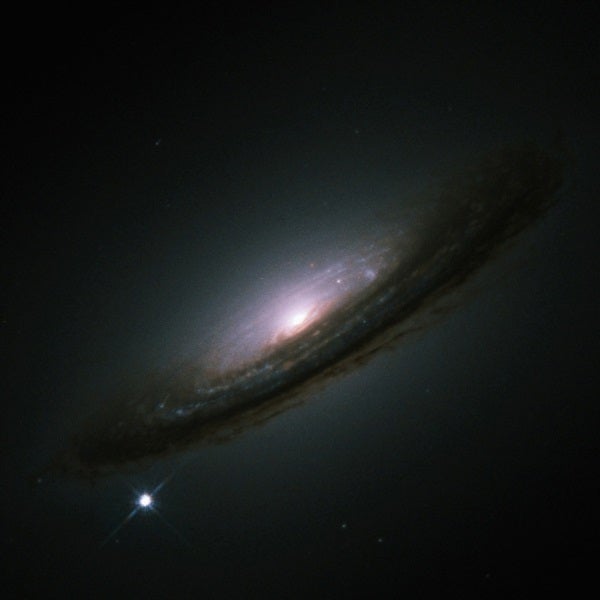Each of these possibilities predicted a different relationship between the distances (or, more precisely, “lookback times”) of galaxies and their redshifts (the amount the universe had stretched while the light was on its way to us).
Redshifts are easy to measure from spectra of galaxies, except when the galaxies are faint. Astronomers obtain distances of nearby galaxies by finding a star of known luminosity (power), measuring its apparent brightness, and applying the inverse-square law of light. But at great distances, normal stars can’t be seen, so the astronomers used Type Ia supernovae — exploding stars resulting from white dwarfs that approach their maximum possible mass (the Chandrasekhar limit). These can be billions of times as powerful as the Sun, and their peak luminosities are nearly uniform.
The two teams used large telescopes to take deep images of various parts of the sky, repeating these same fields a few weeks later. They found supernova candidates among the thousands of faint galaxies. They then obtained spectra of the candidates to confirm that they were Type Ia supernovae and to obtain their redshifts. By repeatedly imaging these supernovae, they measured their light curves and peak brightnesses. The teams also took issues into account such as the nonuniformity of Type Ia supernovae, the presence of intervening dust, and possible cosmic evolution of supernovae.
The result was that the supernovae were too faint (for a given redshift) to be consistent with decelerating or constant-speed expansion of the universe. Instead, the data implied that the expansion has been accelerating in the past 5 billion years. (Later measurements revealed the era of deceleration during the first 9 billion years.) Other techniques have now confirmed this acceleration, which most astrophysicists attribute to the presence of dark energy of unknown origin.
Professor of Astronomy
University of California, Berkeley










